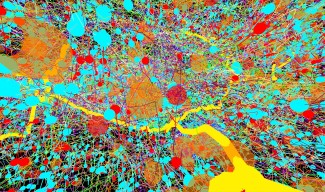Gestation leads to a modification of brain circuits and behaviors such as nesting within the animal kingdom. The underlying biological, neural and hormonal mechanisms have been unknown until now. In a new study, the team led by Nicolas Renier (Inserm) at the Paris Brain Institute has discovered a novel role for hormone-sensitive neurons in the centre of the brain, which are necessary for maternal nesting behaviour in female mice. These results were published in the journal Neuron.
Nesting behaviors are often triggered before the arrival of newborns in parental species. Nest building in birds is perhaps the first example that comes to mind, but this behaviour is also present in all mammals, including humans, to reorganize their habitat before the birth of a baby. The mechanisms by which gestation in mammals will modify the brain circuits and behaviors of everyday life are still elusive. Do the pregnancy hormones play a role in this form of brain plasticity?
To answer these questions, Thomas Topilko, a graduate student in Nicolas Renier's team (Inserm), and his colleagues used the mouse as a model. When pregnant, the female mouse prepares a nest to protect its young from the cold and from predators.
Using a sophisticated technique, light-sheet microscopy, to map brain activity in three dimensions and on a micrometre scale, the researchers identified an unexpected region in the centre of the brain, the Edinger Westphal nucleus, as being involved in maternal preparatory nesting behaviour.
This region was originally known to control eye movement. The team discovered another population of neurons there, whose activity is modified by progesterone (editor's note: one of the main hormones of pregnancy). The altered activation of these cells changes the balance of the mouse's behaviour between sleep and nest building, increasing nest building time at expense of sleep.
More precisely, the researchers showed that these neurons are a rare type of neurons, which are pure peptidergic modulators, i.e. their role is to modulate the activity of other brain regions, which would intervene in the animal's behaviour. In particular, the Edinger Westphal nucleus is anatomically very close to the regions involved in motor behaviors and motivation.
The researchers are now exploring the male-female differences in these neurons, as male mice, unlike females, are not able to build preparatory nests before birth. They also want to study how these neurons integrate with the other modulatory regions of the midbrain, particularly those that enable the execution of motivated behaviours and are highly susceptible to neurodegenerative and psychiatric diseases.







